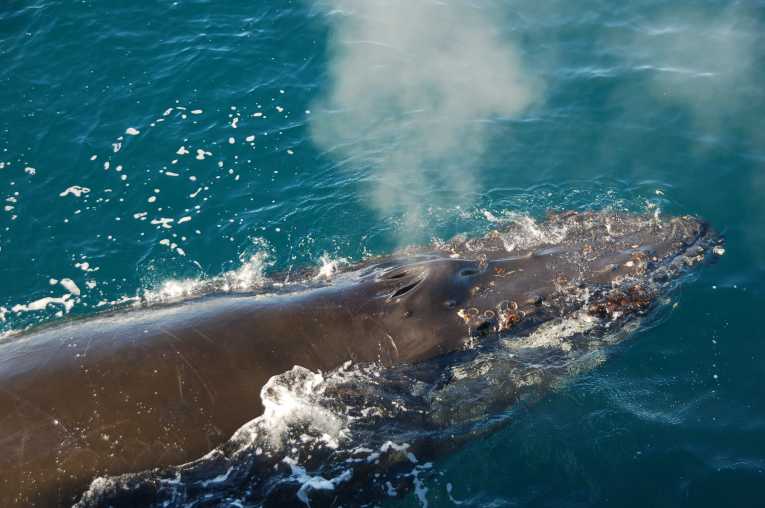Conservationists are often dealing with a moving target - things are changing ever faster on the ground, as climate change and habitat loss proceeds apace. But understanding how endangered animals coped with past moments of environmental stress can go a long way to predicting how such species will cope in the future. A study published in the open-access journal PloS ONE has taken just such an approach, to show that the Californian gray whale is more of a survivor than previously thought - and could even thrive with warmer and rising seas.
The Californian gray whales are one of marine conservation's success stories. After being pushed below a thousand whales at the beginning of the last century, the whaling ban has helped see their numbers soar to 22,000 along the Pacific coasts. However, that success may be threatened - ecologists have reckoned that the maximum viable population for the area is the range of 15-20,000. With greenhouse gas emissions changing the ecological balance of the oceans, could gray whales be in for another period on-the-edge?
Enter a pair of palaeontologists from the Smithsonian Institution and University of California, Berkeley - Nicholas Pyenson and David Lindberg. They have spent several years studying the evolving story of California's gray whales, as they coped with repeated bouts of glaciation and warming. And they think they have discovered that gray whales in the past were a lot more adaptable than modern-day observations might indicate.
California gray whales today spend much of the year cruising 11-thousand miles of oceanic highway, along the west Pacific coast of North America. But summer time is Bering time - that's when the whales gather in large numbers to feast on the wealth of mud-dwelling creatures, such as worms and amphipods, to be found in the shallow waters of the Bering shelf. Because most gray whales are reliant on such sifting of muddy-bottom sediments, ecologist have presumed that their numbers would be restricted when those shallow sea-shelves disappear.
That happened during the last Ice Age. As the polar icecaps and glaciers extended their grip, they locked up much of the globe's waters. Sea-levels fell precipitously, by as much as 400 feet, leaving many of today's shallow sea-shelves exposed. That would have given the gray whales much less space to feed on. But such a restricted feeding zone would have left an imprint on the whales DNA. When populations crash, diversity does too, and so do the levels of genetic inbreeding.
But there is no sign of such a 'genetic bottleneck' in the gray whales DNA. The paper from Lindberg and Pyenson suggests that the whales got around a population crash by extending their feeding habits to include krill and herring. Based on reconstruction of ancient habitats over the last 120,000 years - and plugging in the more flexible menu available to them - the pair reckon gray whales never fell below 5,000 to 10,000 whales, even when the Ice Age was at its peak.
Those number also mean that the Pacific could potentially hold many more whales as sea-levels rise, and the whales adapt to novel food sources - perhaps as many as 170,000. ''I suspect the gray whales will be among the winners in the great climate change experiment,'' Pyenson said. And it also reinforces the need to look beyond what is happening right here-and-now when looking to the future of species. ''Integrating palaeontological and geological data in the context of known ecological traits can help us address impending biological changes in marine ecosystems,'' Lindberg concluded.
Top Image: Whale © Remco Rutten










